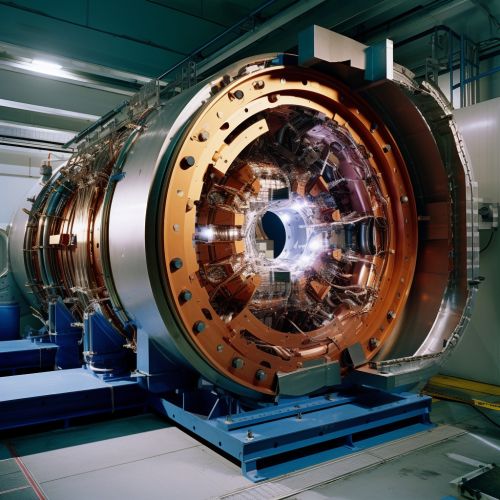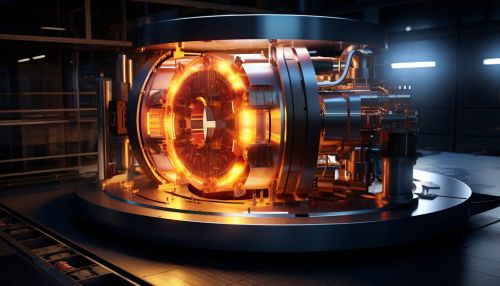The Physics of Superconducting Magnets in Particle Accelerators
Introduction
Superconducting magnets are a critical component of modern particle accelerators. These devices use magnetic fields to guide and accelerate charged particles to high speeds. The physics of superconducting magnets in particle accelerators is a complex field, involving principles from electromagnetism, quantum mechanics, and materials science.


Superconductivity and Magnets
Superconductivity is a quantum mechanical phenomenon where certain materials exhibit zero electrical resistance and expulsion of magnetic fields when cooled below a certain temperature, known as the critical temperature. This property makes them ideal for use in magnets, as they can carry large currents without energy loss, producing strong magnetic fields.
Superconducting magnets are made by winding a superconducting wire into a coil. When a current is passed through the coil, it creates a magnetic field. The strength of this field is proportional to the current and the number of turns in the coil.
Superconducting Magnets in Particle Accelerators
In particle accelerators, superconducting magnets are used to guide and focus the beam of particles. The particles are charged, so they experience a force when they move through a magnetic field. This force is perpendicular to both the direction of motion and the magnetic field, causing the particles to move in a circular path.
The use of superconducting magnets allows for higher magnetic fields, and therefore higher particle energies, than would be possible with conventional magnets. This is crucial for experiments in high-energy physics, where particles need to be accelerated to near the speed of light.
Types of Superconducting Magnets
There are several types of superconducting magnets used in particle accelerators, including dipole magnets, quadrupole magnets, and sextupole magnets.
Dipole magnets produce a magnetic field in one direction and are used to bend the particle beam along a curved path.
Quadrupole magnets produce a magnetic field that varies linearly in two perpendicular directions and are used to focus the beam.
Sextupole magnets produce a magnetic field that varies quadratically in two perpendicular directions and are used to correct for chromatic aberration in the beam.
Superconducting Materials
The most commonly used superconducting material in particle accelerators is niobium-titanium (NbTi). This material has a critical temperature of about 10 Kelvin and can produce magnetic fields of up to about 10 Tesla.
Other materials, such as niobium-tin (Nb3Sn) and high-temperature superconductors like yttrium barium copper oxide (YBCO), are also used in some applications. These materials can produce higher magnetic fields than NbTi, but they are more difficult to work with and more expensive.
Cooling Systems
Superconducting magnets must be cooled below their critical temperature to exhibit superconductivity. This is typically achieved using liquid helium, which has a boiling point of about 4 Kelvin.
The cooling system is a critical component of a particle accelerator, as it must maintain the magnets at a constant low temperature despite the heat generated by the accelerating particles and other sources. This requires a complex system of refrigeration equipment and thermal insulation.
Challenges and Future Directions
Despite the many advantages of superconducting magnets, there are also significant challenges associated with their use in particle accelerators. These include the need for complex cooling systems, the risk of quenching (a sudden loss of superconductivity), and the high cost of superconducting materials.
However, ongoing research in materials science and engineering is leading to the development of new superconducting materials and technologies that could overcome these challenges and enable even higher particle energies in the future.
